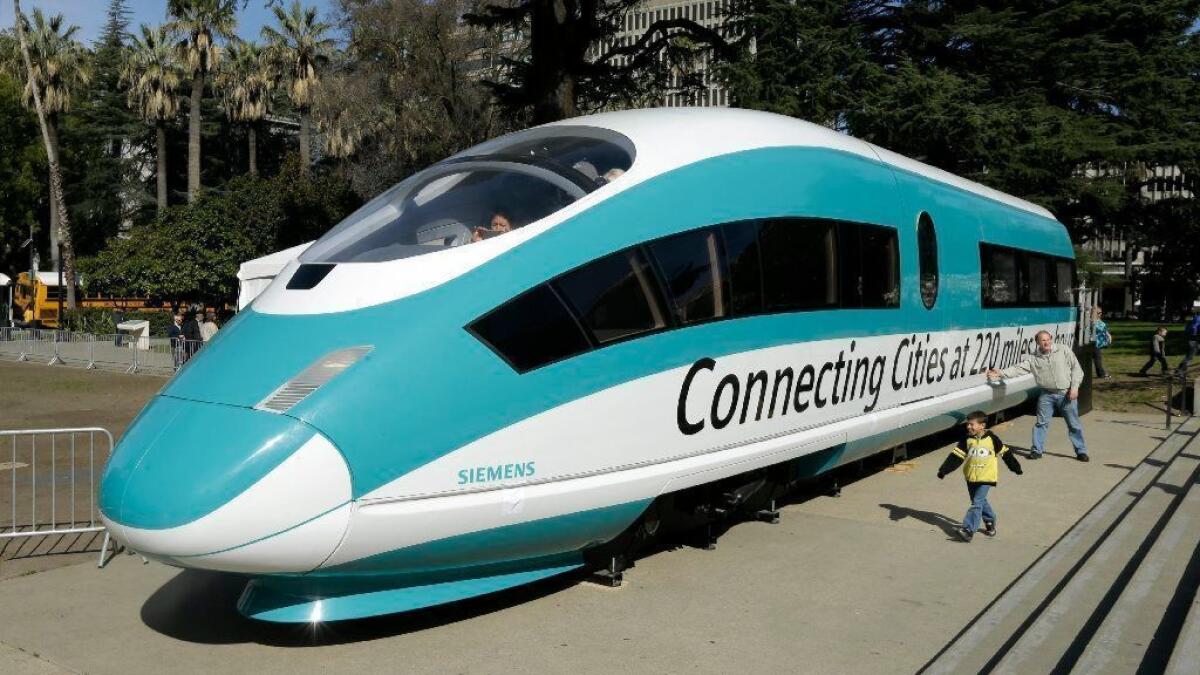Readers React: In 2029, we’ll marvel at what remains of the ill-fated bullet train from our driverless cars

To the editor: When California’s bullet train is up and running — allegedly in 2029 — the trip from Los Angeles to San Francisco is supposed to take two hours and 40 minutes. How long will it take a car to make that trip in 2029, and what emissions will be put out by that vehicle?
I cannot accurately answer either of these questions, nor can I answer who will ride the train and how much they will pay. Japan’s bullet train started service in 1964, so we’ll be getting ours 65 years later. There are few technologies from 65 years ago that are viable today.
Both Gov. Browns, Pat and his son Jerry, have made California a better place. But unfortunately for our current governor, his legacy will be us pointing out to our grandchildren the remnants of the ill-fated bullet train. We will do this while we make the trip to San Francisco in our driverless vehicles.
Jason Shokrian, Studio City
..
To the editor: The bullet train itself is not the problem. The fault lies with the project conceived through a ballot initiative in 2008.
A project of this magnitude, complexity and funding needed to start in the Legislature, and before the first shovel hit the ground there needed to be hearings, audits, planning sessions, route feasibility studies and even some deals done over dinner.
While there would still be delays and increased budgets, which happen with most construction projects, a number of the basic problems we now see could have been addressed. The ballot initiative had no real-world planning or funding.
Matthew Hetz, Los Angeles
..
To the editor: According to the article on cost overruns on the bullet train project, “The project is 13 years behind the schedule set in the bond act approved by voters in 2008.”
Only a government bureaucracy could manage to fall 13 years behind schedule on a project that has existed for only 10 years.
Richard Showstack, Irvine
Follow the Opinion section on Twitter @latimesopinion and Facebook
More to Read
A cure for the common opinion
Get thought-provoking perspectives with our weekly newsletter.
You may occasionally receive promotional content from the Los Angeles Times.










